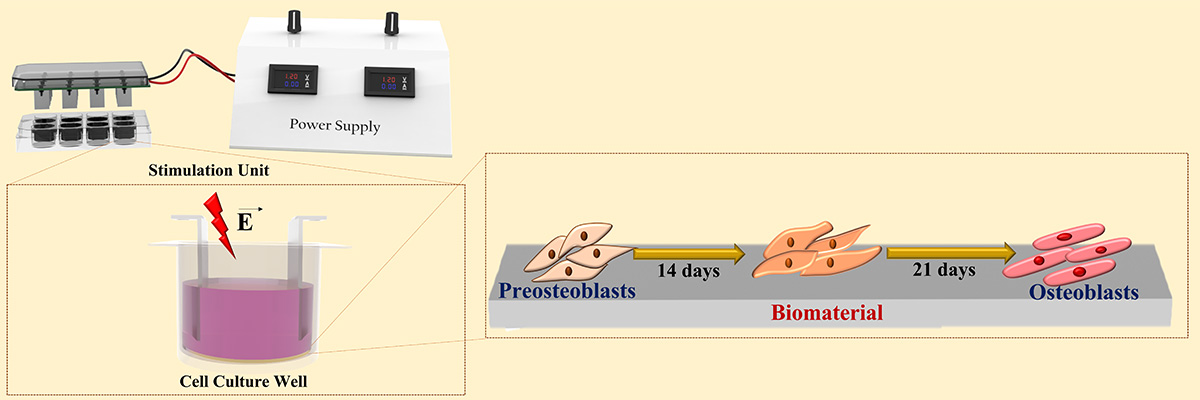Using Electrical Stimulation for Accelerating Bone Regeneration
– Prarthana Ghosh Dastidar

Got a broken bone? Want to reduce the hassle of wearing a plaster for months?
Researchers at IISc have successfully used electric stimulation to grow bone cells in a culture plate much faster than conventional techniques. In the future, the technology can be used to manufacture implants that can effectively integrate with our bones and heal them faster.
Our bones are ‘piezoelectric,’ which means they accumulate electric charge when subjected to mechanical stress, something as simple as bearing the load of our body weight. This accumulation of charge is also conducive to bone growth and development. The membrane of a bone cell has channels for calcium ions. Through various pathways, these ions pass on signals to the cell that they can now divide into daughter cells, thus helping the bones grow. The flow of calcium ions through these channels is important for our bones to grow. Previously, scientists have seen that using an external electric field can enhance the activity of these channels, allowing more calcium ions to flow in, thereby helping bone cells divide faster and our bones to grow.
The team, led by Bikramjit Basu, Professor at the Materials Research Centre, and Hardik J Pandya, Associate Professor at the Department of Electronic Systems Engineering, has recently developed a tool that uses electrical stimulation to help mouse bone cells grow in a culture plate. They created a composite material consisting of a polyvinylidene difluoride (PVDF) base mixed with barium titanate and carbon nanotubes. Mouse bone cells were given this material as a medium to attach and grow.
PVDF is electroactive – its shape and size can change in response to electric charge. This medium can therefore mimic the environment inside our body, where piezoelectric bones can undergo growth and modulation in response to accumulated electric charge. The team also developed an electronic module for electric stimulation of the medium in which the cells are grown in the presence of an electric field, active for 10 minutes a day. The researchers found that the mouse bone cell precursors grew into fully formed bone cells much faster under these conditions.
This technology shows potential for developing implants that can be integrated with broken bones and help them heal faster.
REFERENCE:
Bhaskar N, Kachappilly MC, Bhushan V, Pandya HJ, Basu B, Electrical field stimulated modulation of cell fate of pre-osteoblasts on PVDF/BT/MWCNT based electroactive biomaterials, J Biomed Mater Res. (2022)
LAB WEBSITE:
https://bikramjitbasu.in/
https://labs.dese.iisc.ac.in/beeslab/




